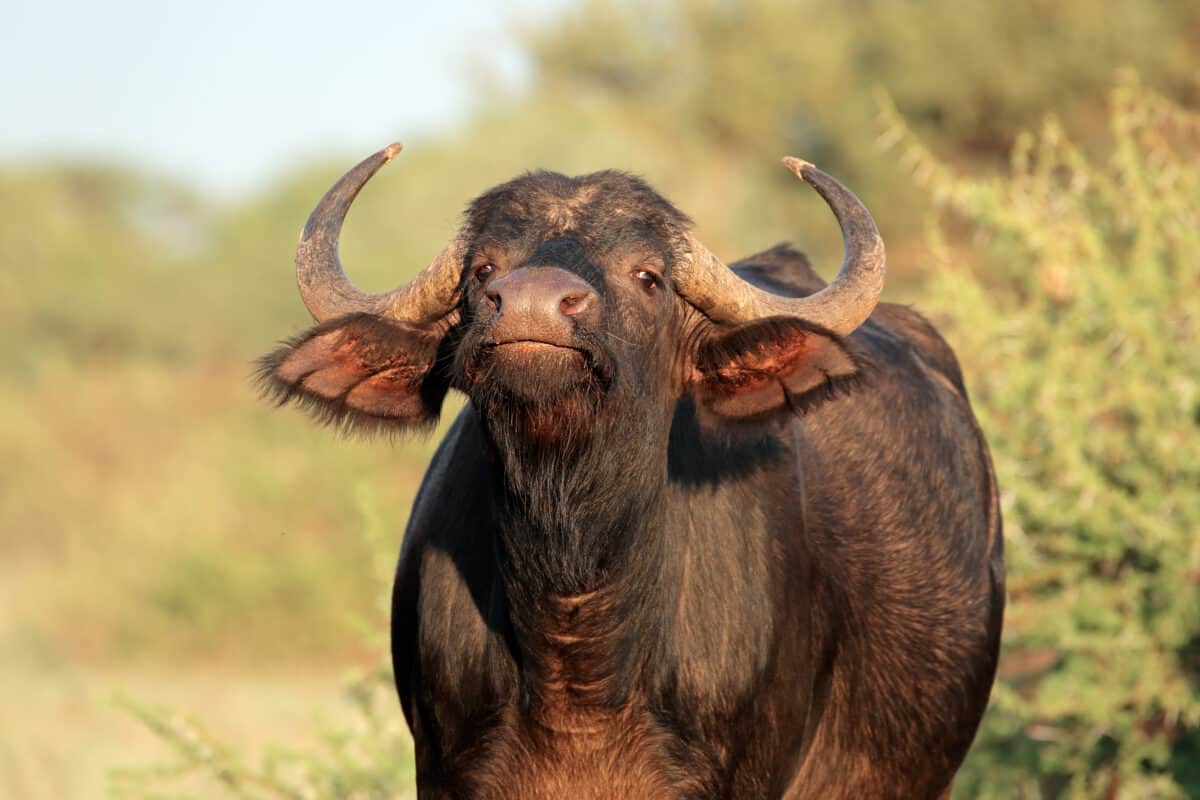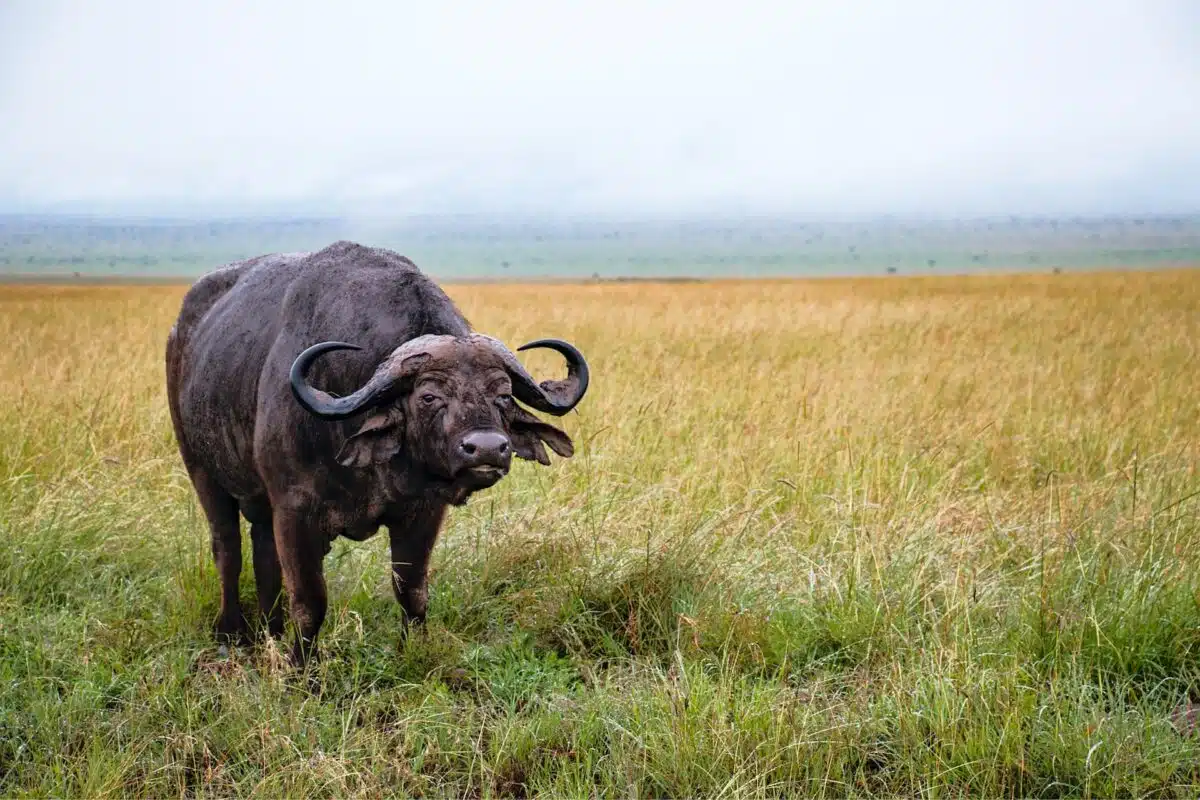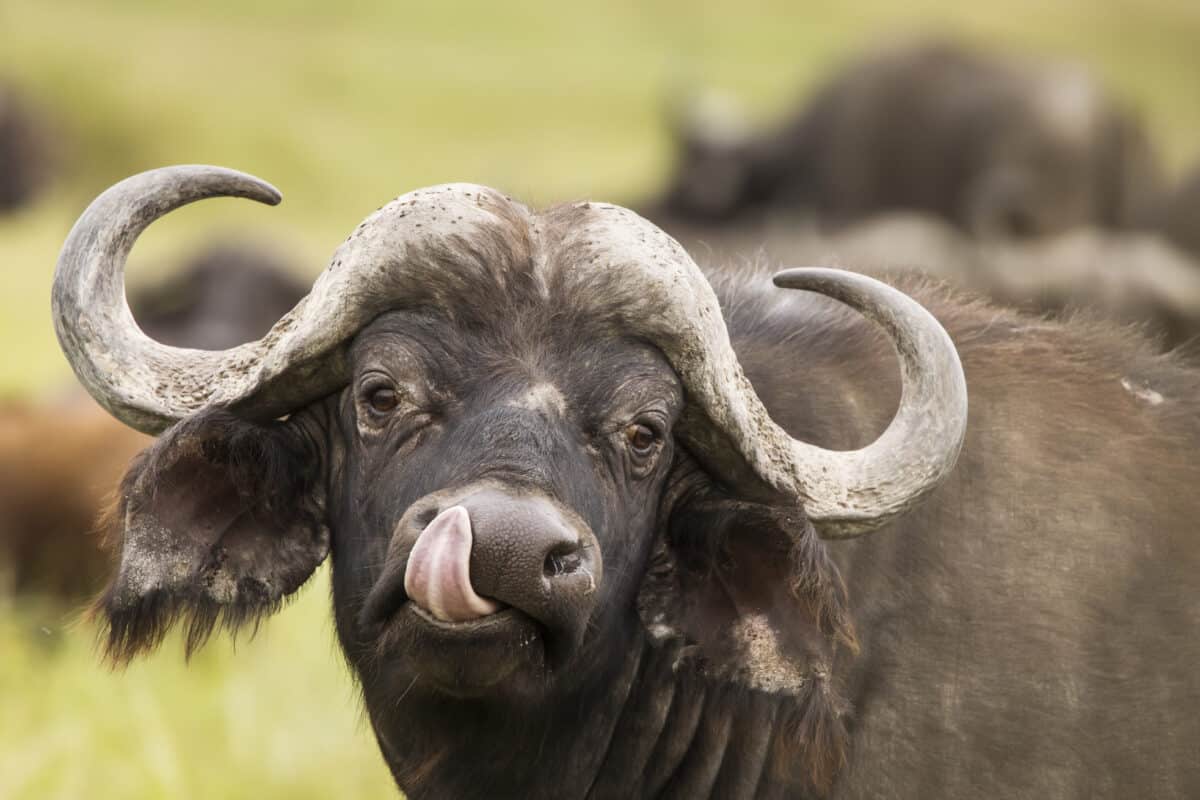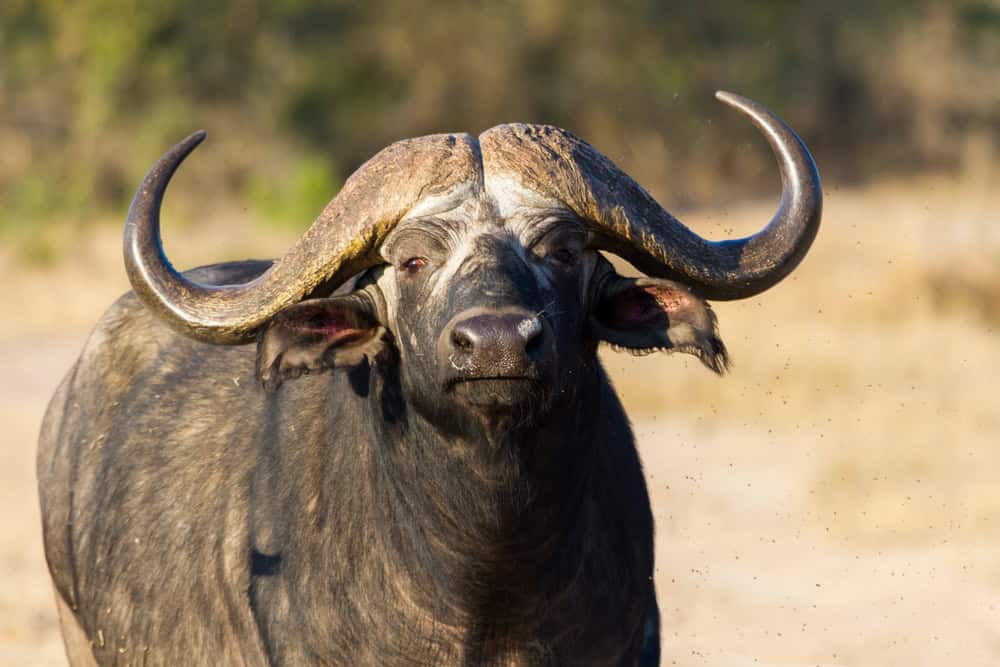The Cape buffalo, scientifically known as Syncerus caffer, is a prominent member of Africa’s Big Five game animals. It is revered and feared for its formidable presence in the wild. Native to the savannas and grasslands of sub-Saharan Africa, these robust herbivores are often the centerpiece of African wildlife safaris. Despite their bovine classification, Cape buffaloes are far from placid or docile. They have earned a reputation as one of the most dangerous animals on the continent, responsible for more human fatalities in Africa than any other large mammal.
Physical Characteristics That Command Respect

The Cape buffalo’s intimidating reputation is partly due to its physical prowess. Adult males, known as bulls, can weigh anywhere from 1,100 to 2,200 pounds (500 to 1,000 kilograms) and stand up to six feet (1.8 meters) at the shoulder. A thick, muscular body and a dense, shaggy coat complement their powerful build. Perhaps the most striking feature is their formidable horns, which can span up to five feet (1.5 meters) from tip to tip. The horns are fused at the base, forming a bony shield known as a “boss,” which provides added protection during combat.
Behavioral Traits Guardians of the Savanna

While their physical attributes are impressive, the Cape buffalo’s behavior truly solidifies its dangerous reputation. Known for their unpredictable and aggressive nature, these animals are highly protective of their herd. Buffalos are social creatures that live in groups typically ranging from a few dozen to several hundred. When threatened, they employ a cooperative defense strategy to protect the young and vulnerable members of the herd.
Their notorious “circle of death” formation involves adult buffalos positioning themselves outward in a circle, with the young secured in the center. This defensive tactic makes them formidable foes against predators, including lions. Their unpredictability becomes particularly pronounced when injured or when a calf is threatened, often charging with little warning and astonishing speed.
Natural Offense A Threat to Predators and Humans Alike

While the Cape buffalo’s defensive instincts are well-known, they are also aggressive attackers when provoked. They are capable of speeds up to 35 miles per hour (56 km/h) and have the endurance to sustain a charge over considerable distances. This capability makes them particularly lethal opponents, even for apex predators such as lions. In fact, it is not uncommon for a buffalo to fatally injury a lion in self-defense.
Humans are not immune to the buffalo’s fury, either. Hunters and safari-goers in Africa are well aware of their aggression, and buffaloes are known to ambush pursuers who have wounded or threatened them. Their tendency to seek revenge makes them unpredictable and highly dangerous, contributing to their reputation as the “black death” among hunters.
Ecological Role and Conservation Status

Despite their fearsome reputation, Cape buffaloes play a critical ecological role in maintaining the health of the savanna ecosystem. As large herbivores, they impact plant communities, contributing to the cycling of nutrients and shaping vegetation landscapes. Their grazing patterns can stimulate plant growth, benefiting other species that share their habitat.
Conservation efforts for the Cape buffalo have been relatively successful, thanks in part to their widespread distribution and adaptability. However, they still face threats from habitat loss and diseases such as bovine tuberculosis. Conservationists continue to monitor their populations closely to ensure they remain a vibrant part of Africa’s biodiversity.
Conclusion

The Cape buffalo’s reputation as a killer is not solely due to its physical prowess or propensity for aggression. Still, it is also a testament to its resilience and strategic social behaviors. While they may be dangerous when provoked, appreciating their role in the natural world and the awe they inspire in those who encounter them is crucial for biodiversity and ecological health. Understanding and respecting the Cape buffalo in the context of its environment reveals the complexity of wildlife survival strategies and the delicate balance of nature in which these animals thrive.
- 10 Animals That Risked Their Lives to Save Humans - August 9, 2025
- 14 Reasons Why Bears Are Afraid of Humans (Most of the Time) - August 9, 2025
- 11 Frogs That Look Too Weird to Be Real - August 9, 2025

